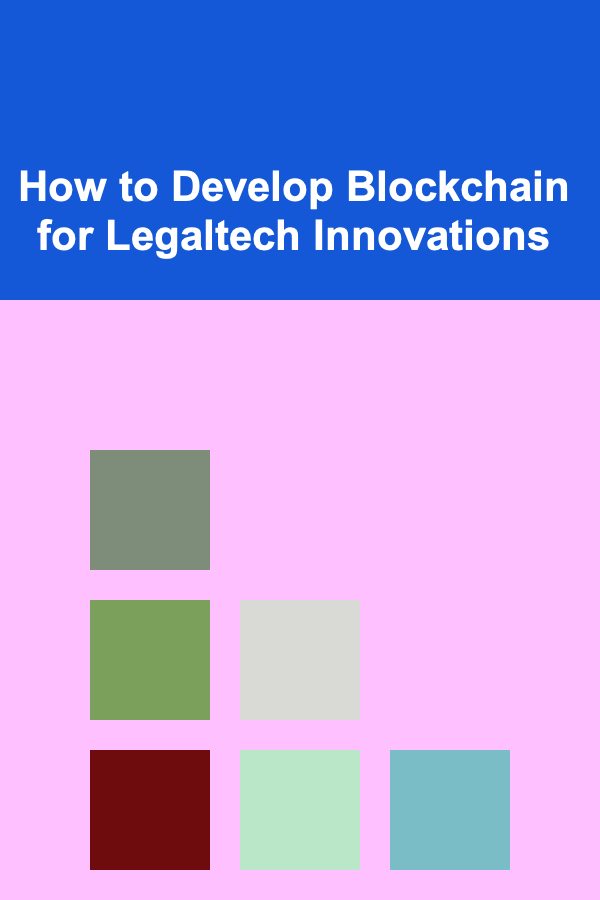
How to Understand the Principles of Least Privilege
ebook include PDF & Audio bundle (Micro Guide)
$12.99$6.99
Limited Time Offer! Order within the next:

The Principle of Least Privilege (PoLP) is one of the fundamental concepts in the realm of cybersecurity and information security. At its core, PoLP aims to minimize the risk of harm by ensuring that each user, application, or system component only has the minimal level of access needed to perform its required functions. While this might seem like a straightforward concept, its implications are vast and extend across many domains, from corporate network management to software development.
In this article, we will explore the Principle of Least Privilege in depth, examining its definition, importance, practical applications, challenges, and how it can be implemented effectively in various contexts. By understanding this principle thoroughly, organizations and individuals can better protect their systems, data, and digital assets from malicious actors or inadvertent damage caused by unintentional misuse.
What is the Principle of Least Privilege?
The Principle of Least Privilege (PoLP) is a security concept that dictates that users, applications, and systems should be granted only the minimum level of access---or privileges---necessary to perform their specific tasks. This principle is based on the idea that restricting access to critical resources will reduce the risk of potential misuse, either through malicious activity or accidental error.
PoLP is not limited to human users but extends to automated systems, applications, and network components. For example, if an application only needs read access to certain files, it should not have write access to those files, unless absolutely necessary for its function. Similarly, if a user only requires access to certain parts of a system or application, they should not have elevated permissions that could grant access to sensitive or critical data outside the scope of their duties.
Why is the Principle of Least Privilege Important?
The Principle of Least Privilege plays a critical role in improving an organization's overall security posture. The most obvious benefit is the reduction of the attack surface. By limiting access to only what is necessary, you ensure that potential attackers or malicious insiders have fewer opportunities to exploit vulnerabilities.
Here are several reasons why PoLP is so crucial:
1. Minimizing the Impact of a Security Breach
If a system or user is compromised, limiting the scope of their access ensures that the attacker cannot easily move laterally within the network, escalate their privileges, or access sensitive information. This containment strategy can significantly reduce the damage caused by a breach. For example, if an attacker gains access to a user's account with minimal privileges, they may only be able to access public data, rather than being able to steal sensitive financial records or customer information.
2. Limiting the Risk of Human Error
Many security breaches are not caused by malicious intent but by human error. For instance, a user may accidentally delete a critical system file or expose sensitive data by misconfiguring a setting. By enforcing the Principle of Least Privilege, these errors are less likely to cause catastrophic harm, as users do not have the ability to modify important system components or access information beyond their role.
3. Preventing Insider Threats
Insider threats, where authorized users intentionally or unintentionally cause harm, are particularly challenging to mitigate. By adhering to PoLP, organizations can limit the potential damage an insider can do. For instance, if a system administrator's account is compromised, their elevated privileges may be used to alter or delete data. However, if the admin is only given access to what is needed for their task, this risk is minimized.
4. Regulatory Compliance
Many industries are subject to regulatory requirements that mandate data protection, such as the GDPR in Europe or HIPAA in the United States. These regulations often require that access to personal data be tightly controlled. By adhering to the Principle of Least Privilege, organizations can demonstrate compliance with these requirements and avoid potential legal and financial penalties.
Key Concepts in the Principle of Least Privilege
To fully appreciate PoLP, it's essential to understand several key concepts related to this principle:
1. Role-Based Access Control (RBAC)
Role-Based Access Control is a method of regulating access to resources based on the roles of individual users within an organization. With RBAC, each user is assigned a role, and that role defines what level of access the user has. The idea is to limit access based on the user's job requirements, which is aligned with PoLP.
For example, a regular employee may have access to their own files and necessary company resources, but they will not have administrative access or be able to modify critical system configurations. An administrator, on the other hand, would have broader access, but even their privileges would be restricted to the tasks necessary for their job.
2. Just-in-Time (JIT) Access
Just-in-Time access is a concept where users are granted elevated privileges for a limited time to perform a specific task. Once the task is completed, the access rights are automatically revoked. This minimizes the potential for long-term exposure to elevated access and ensures that users only have the permissions they need when they need them.
JIT access is particularly valuable in high-security environments where users or administrators need temporary access to perform specific maintenance or troubleshooting tasks. This is a more granular and controlled approach to granting privileges and further enhances PoLP.
3. Least Privilege in the Context of Automation
In modern IT environments, automation plays a central role in system management, software deployment, and configuration. Automation tools, scripts, and agents should also adhere to PoLP. For instance, an automated system that handles backups should only have access to the necessary files to perform its task, rather than full access to all files on a system.
This minimizes the risk of a vulnerability in an automation system being exploited to compromise broader parts of the infrastructure. Ensuring automated systems follow the same least privilege principles as human users helps mitigate the risks posed by vulnerabilities in third-party software or scripts.
4. Audit Trails and Monitoring
An essential component of implementing PoLP is creating robust audit trails and monitoring user actions. By maintaining logs of what actions users perform and when, organizations can identify potential misuse of privileges and take action to address any incidents. This ensures that access is not only limited but also properly tracked and reviewed.
Practical Applications of the Principle of Least Privilege
Implementing PoLP effectively requires understanding how to apply it across various environments, from network security to application design. Below, we outline several practical scenarios where PoLP can be applied:
1. In IT Networks and Systems
In an IT network, PoLP can be implemented by limiting the permissions of users based on their specific roles. For example:
- A sales representative might need access to customer records but should not have access to financial reports or server configurations.
- A systems administrator might need broader access to the network infrastructure but should only be granted specific administrative privileges for the systems they manage.
Additionally, network security controls like firewalls and intrusion detection systems can enforce PoLP by only allowing users to access the resources necessary for their role, blocking all other unnecessary traffic.
2. In Cloud Computing
Cloud environments present unique challenges for PoLP because resources are often distributed and dynamic. Cloud providers such as AWS, Azure, and Google Cloud offer Identity and Access Management (IAM) tools that allow administrators to define specific access policies for users and services.
For instance, administrators can define access roles based on service needs, ensuring that different teams or applications only have the necessary permissions. Additionally, tools like virtual private clouds (VPCs) and security groups help enforce these permissions by isolating resources and controlling access at the network level.
3. In Software Development
In software development, PoLP is crucial for securing code, applications, and databases. Developers can implement PoLP in the following ways:
- Database access: Developers and database administrators should only have access to the specific databases they need to work with, reducing the risk of exposing sensitive data.
- Code repositories: Developers should only have access to the parts of the codebase necessary for their work. For example, a frontend developer might not need access to the entire backend code.
- Least Privilege for Services: Microservices and APIs should follow PoLP by exposing only the endpoints necessary for their functions and restricting access to sensitive services or data.
4. In Access Control Systems
Access control systems in physical environments---such as secure buildings or data centers---can also implement PoLP by limiting who can access certain areas based on the user's role. For example, only employees who need access to a server room should be granted the necessary security clearance, while other staff members should be restricted from entering.
Challenges in Implementing PoLP
While the Principle of Least Privilege is a powerful security strategy, its implementation is not without challenges. Some of the common hurdles include:
1. Complexity of Role Management
In large organizations, managing roles and access rights can become a complex task. Users may transition between roles, requiring frequent updates to their privileges. Additionally, as organizations grow, new roles and responsibilities may arise, necessitating continuous updates to access policies.
2. Balancing Usability and Security
PoLP sometimes conflicts with usability. Users may need elevated privileges to perform specific tasks, but granting too much access can introduce security risks. Striking the right balance between usability and security is critical, and organizations must weigh the need for convenience against the risk of exploitation.
3. Inconsistent Enforcement Across Systems
Ensuring that PoLP is applied consistently across all systems, applications, and services can be a daunting task. Disparate systems with different access control mechanisms may lead to gaps in access control and privileges, which can undermine the effectiveness of PoLP.
Conclusion
The Principle of Least Privilege is a foundational concept in cybersecurity that reduces the risk of security breaches and data misuse. By granting users, applications, and systems only the minimum level of access necessary to perform their tasks, organizations can significantly mitigate the impact of both external and internal threats.
Implementing PoLP requires careful planning, role management, and constant monitoring to ensure that access rights are properly enforced. While it may come with some challenges, the benefits of reduced risk, regulatory compliance, and enhanced security make it an essential practice in today's increasingly complex digital landscape.
By adopting and adhering to the Principle of Least Privilege, organizations can create a security culture where risks are minimized, and sensitive resources are protected.

How to Create a Relaxing Yet Fun Atmosphere for a Laid-Back Party
Read More
How to Lock and Secure Windows to Prevent Break-Ins
Read More
How to Profit from Deep Learning by Building Niche AI Applications
Read More
How to Use Student Discounts While Traveling
Read More
How to Develop Blockchain for Legaltech Innovations
Read MoreHow to Integrate Bill Payment Tracking into Your Budget
Read MoreOther Products

How to Create a Relaxing Yet Fun Atmosphere for a Laid-Back Party
Read More
How to Lock and Secure Windows to Prevent Break-Ins
Read More
How to Profit from Deep Learning by Building Niche AI Applications
Read More
How to Use Student Discounts While Traveling
Read More